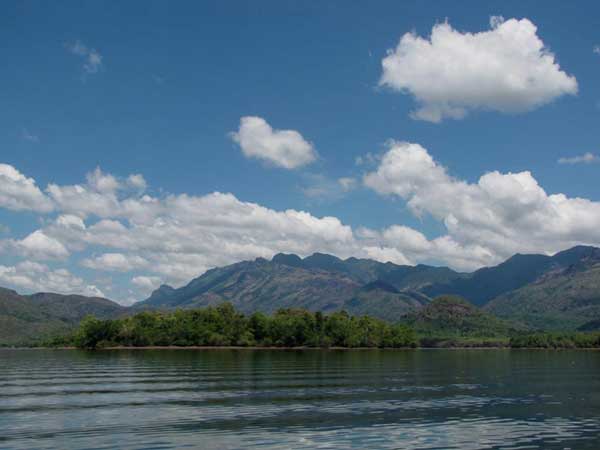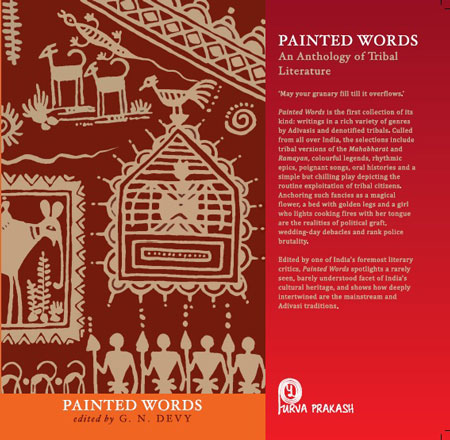
Photo courtesy Davidson Sargunam >>

International Day of the World’s Indigenous People (9 August) >>
Did you know?
- Mountains host about half of the world’s biodiversity hotspots and 30% of all Key Biodiversity Areas.”
- Of the 20 plant species that supply 80% of the world’s food, six originated and have been diversified in mountains: maize, potatoes, barley, sorghum, tomatoes, and apples.
- More than half of humanity relies on mountain freshwater for everyday life.
Mountains are home to 15% of the world’s population and host about half of the world’s biodiversity hotspots. They provide freshwater for everyday life to half of humanity. Their conservation is a key factor for sustainable development and is part of Goal 15 of the SDGs.
Unfortunately, mountains are under threat from climate change and overexploitation. As the global climate continues to warm, mountain people — some of the world’s poorest — face even greater struggles to survive. The rising temperatures also mean that mountain glaciers are melting at unprecedented rates, affecting freshwater supplies downstream for millions of people.
This problem affects us all. We must reduce our carbon footprint and take care of these natural treasures.
The increasing attention to the importance of mountains led the UN to declare to 2002 the UN International Year of Mountains. The first international day was celebrated for the first time the following year, 2003.
Its roots date back to 1992, when the document “Managing Fragile Ecosystems: Sustainable Mountain Development” (called Chapter 13), was adopted as part of the action plan Agenda 21 of the Conference on Environment and Development.
Mountain biodiversity is the theme of this year’s International Mountain Day, so let’s celebrate their rich biodiversity, as well as address the threats they face.
Mountains loom large in some of the world’s most spectacular landscapes. Their unique topography, compressed climatic zones and isolation have created the conditions for a wide spectrum of life forms.
Biodiversity encompasses the variety of ecosystems, species and genetic resources, and mountains have many endemic varieties. The differentiated topography in terms of altitude, slope and exposure in mountains offers opportunities to grow a variety of high-value crops, horticulture, livestock and forest species.
For example, mountain pastoralists in Pakistan have a highly treasured livestock genetic resource pool with special traits bred into animals, such as disease resilience, which can help adaption to changing climate. Nearly 70% of mountain land is used for grazing and provides manure that enhances soil fertility. Livestock not only produces food items such as milk, butter and meat, but also valuable by-products, such as some of the most precious yarns, like cashmere wool.
However, climate change, unsustainable farming practices, commercial mining, logging, and poaching all exact a heavy toll on mountain biodiversity. In addition, land use and land cover change, and natural disasters, accelerate biodiversity loss and contribute to creating a fragile environment for mountain communities. Ecosystem degradation, loss of livelihoods and migration in mountains can lead to the abandonment of cultural practices and ancient traditions that have sustained biodiversity for generations.
The sustainable management of mountain biodiversity has been increasingly recognized as a global priority. Sustainable Development Goal 15, target four, is dedicated to the conservation of mountains’ biodiversity in consideration of its global relevance. Biodiversity in all ecosystems is in focus, as the United Nations has declared 2021 to 2030 the UN Decade on Ecosystem Restoration and governments prepare to negotiate the post-2020 global biodiversity framework for adoption this year at the 15th meeting of the Conference of the Parties (COP 15) to the Convention on Biological Diversity (CBD).Celebrate this International Day 2020 with your community and friends preparing an event or joining the conversation on social media using the hashtag #MountainsMatter. Pass on some of the key messages, or share about the biodiversity in the mountains near you, or a photo of your favorite mountain.
Source:
URL: https://www.un.org/en/observances/mountain-day
Date visited: 3 December 2020
[Bold typeface added above for emphasis]
Tips for using interactive maps
Toggle to normal view (from reader view) should the interactive map not be displayed by your tablet, smartphone or pc browser
For details and hyperlinks click on the rectangular button (left on the map’s header)
Scroll and click on one of the markers for information of special interest
Explore India’s tribal cultural heritage with the help of another interactive map >>
See also
Adverse inclusion | Casteism | Rural poverty
Demographic Status of Scheduled Tribe Population of India (Census figures 2011)
Fact checking | Figures, census and other statistics
Human Rights Commission (posts) | www.nhrc.nic.in (Government of India)
Search tips | Names of tribal communities, regions and states of India
“What is the Forest Rights Act about?” – Campaign for Survival and Dignity
“Who are Scheduled Tribes?” – Government of India (National Commission for Scheduled Tribes, NCST)

Tribal Literature by G.N. Devy >>
Free eBooks & Magazine: Adivasi literature and languages >>
“India, a union of states, is a Sovereign, Secular, Democratic Republic with a Parliamentary system of Government. The President is the constitutional head of Executive of the Union. In the states, the Governor, as the representative of the President, is the head of Executive. The system of government in states closely resembles that of the Union. There are 28 states and 8 Union territories in the country. Union Territories are administered by the President through an Administrator appointed by him/her. From the largest to the smallest, each State/UT of India has a unique demography, history and culture, dress, festivals, language etc. This section introduces you to the various States/UTs in the Country and urges you to explore their magnificent uniqueness…” – KnowIndia (Government), States and Union Territories (Visited: 2 September 2023)
Learn more about India’s 28 States and 8 Union Territories – From Andhra Pradesh to West Bengal | Nutrition >>

Learn more
Anthropology | Ekalavya (Eklavya) | Government | Networking | Organisations
Colonial policies | Bonded labour, Forced labour, Slavery & Zamindar | “Criminal tribe”
Biodiversity | Biodiversity hotspot | Hyderabad biodiversity pledge | Western Ghats – tribal heritage & ecology
Climate change | Audio | The Climate Question (BBC Podcast)
Coastal region | Mangrove forest | Water | Wetland
Customs | Homes and utensils | Modernity | Native science | Revival of traditions
eBooks, eJournals & reports | eLearning
eBook | Background guide for education
Ecology | Eco tourism | Ethnobotany | Sustainable agriculture | Wildlife tourism
Food distribution | Recommendations
Forest Rights Act (FRA) | Hunter-gatherers | Nishad (Nishada, Sanskrit Niṣāda, “tribal, hunter, mountaineer, degraded person outcast”) | Vanavasi (Vanvasi, Vanyajati)
Health and nutrition | Antivenom | Ayurveda
History | Environmental history and what makes for a civilization – Romila Thapar
Hunter-gatherer | Man animal conflict | Vanavasi | Sakuntala narrative
Fruit | Honey & bees | Indigenous knowledge systems | Mushroom | Vegetable
Involving tribal communities in conservation (Kanyakumari)
Mountains | Nishad (Nishada, Sanskrit Niṣāda, “tribal, hunter, mountaineer, degraded person outcast”) | Particularly vulnerable tribal group (PVTG)
Nature and wildlife | Bamboo | Bird | Crocodile | Elephant | Insect | Snake | Tiger | Trees
Sacred grove | Worship and rituals
Scheduled Tribes | Classifications in different states
Success story | “The tribal food basket has always been diverse and nutritious”
United Nations on climate change
What is the Forest Rights Act about?
Who is a forest dweller under this law, and who gets rights?